Abstract
Response-contingent timeouts of equal duration and frequency were added to both alternatives of unequal concurrent schedules of reinforcement. For each of 4 pigeons in Experiment 1, relative response rates generally became less extreme as the frequency of timeout increased. In Experiment 2, relative response rates consistently approached indifference as the duration of timeout was increased. Variation in time allocation was less consistent in both experiments. Absolute response rates did not vary with the timeout contingency in either experiment. In a third experiment, neither measure of choice varied systematically when the duration of a postreinforcement blackout was varied. In contrast to the present results, preference has been shown to vary directly with the parameters of shock delivery in related procedures. The pattern of results in the first two experiments follows that obtained with other manipulations of the overall rate of reinforcement in concurrent schedules. The results of the third experiment suggest that an intertrial interval following reinforcement is not a critical feature of the overall rate of reinforcement.
Full text
PDF
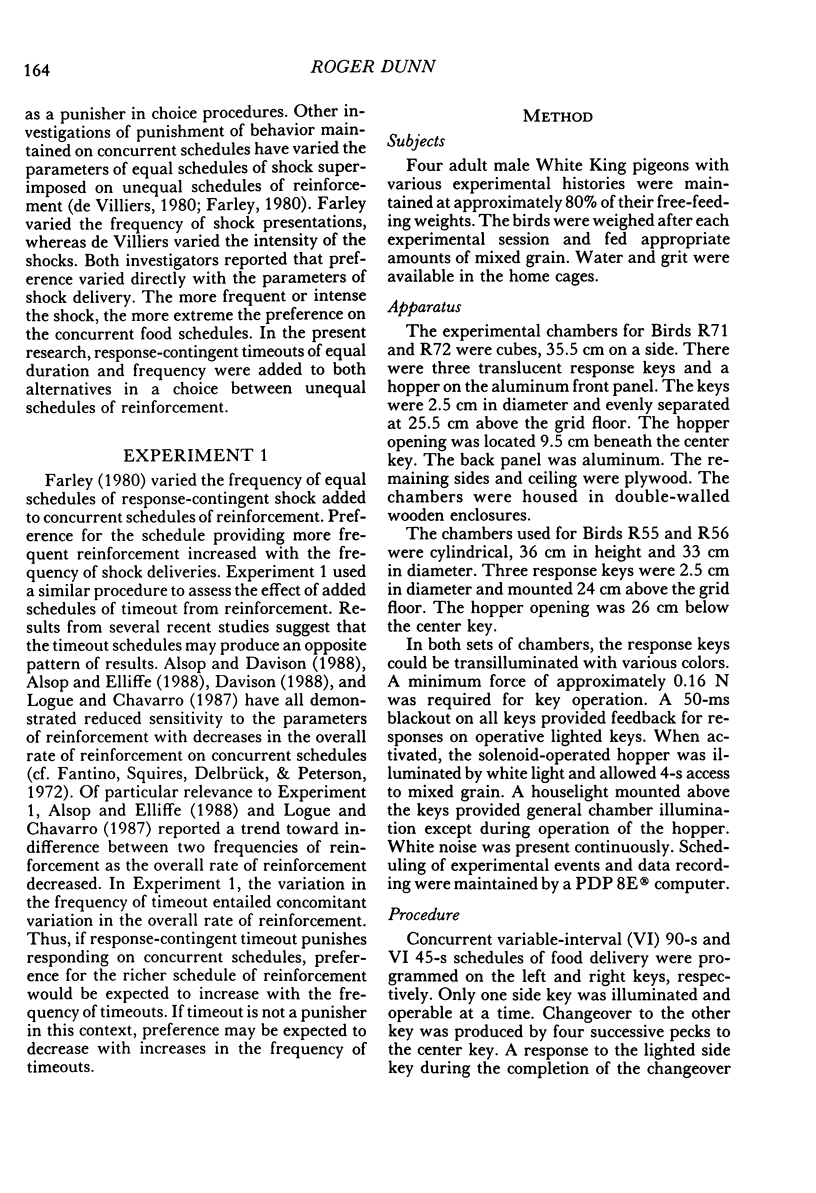
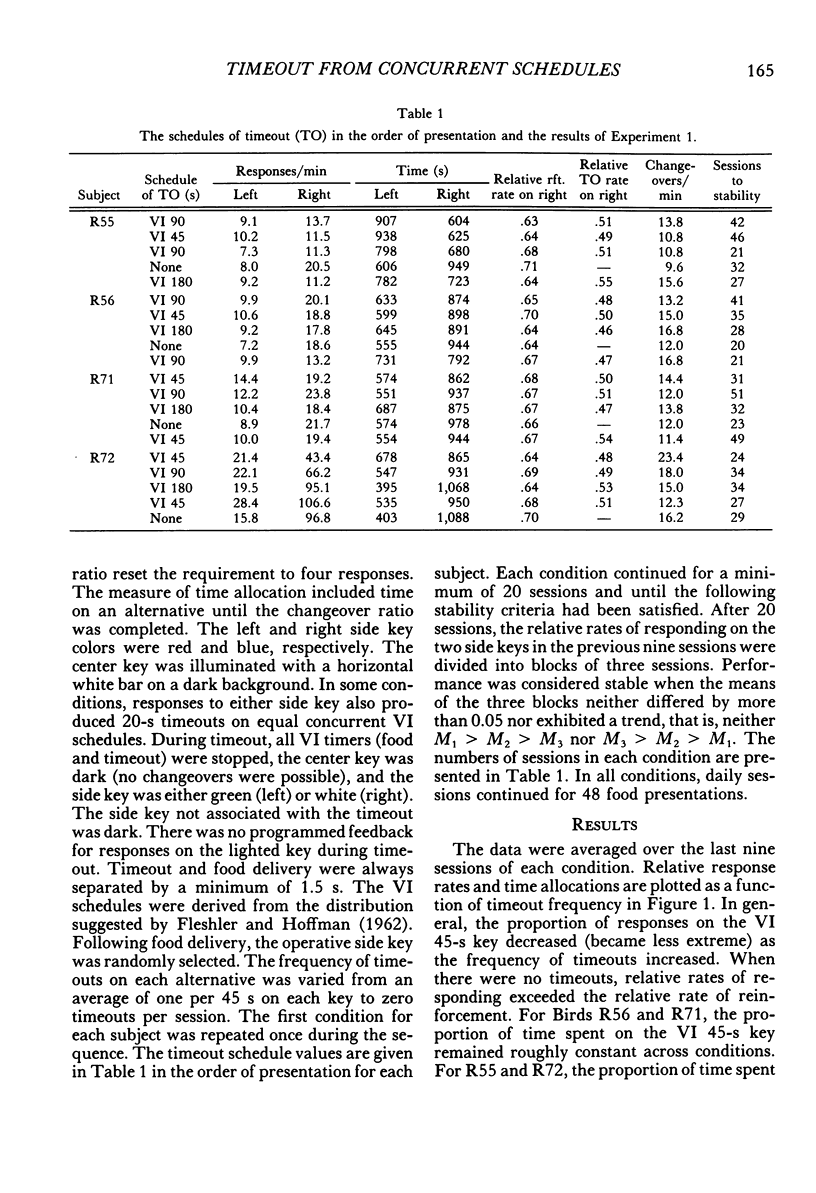
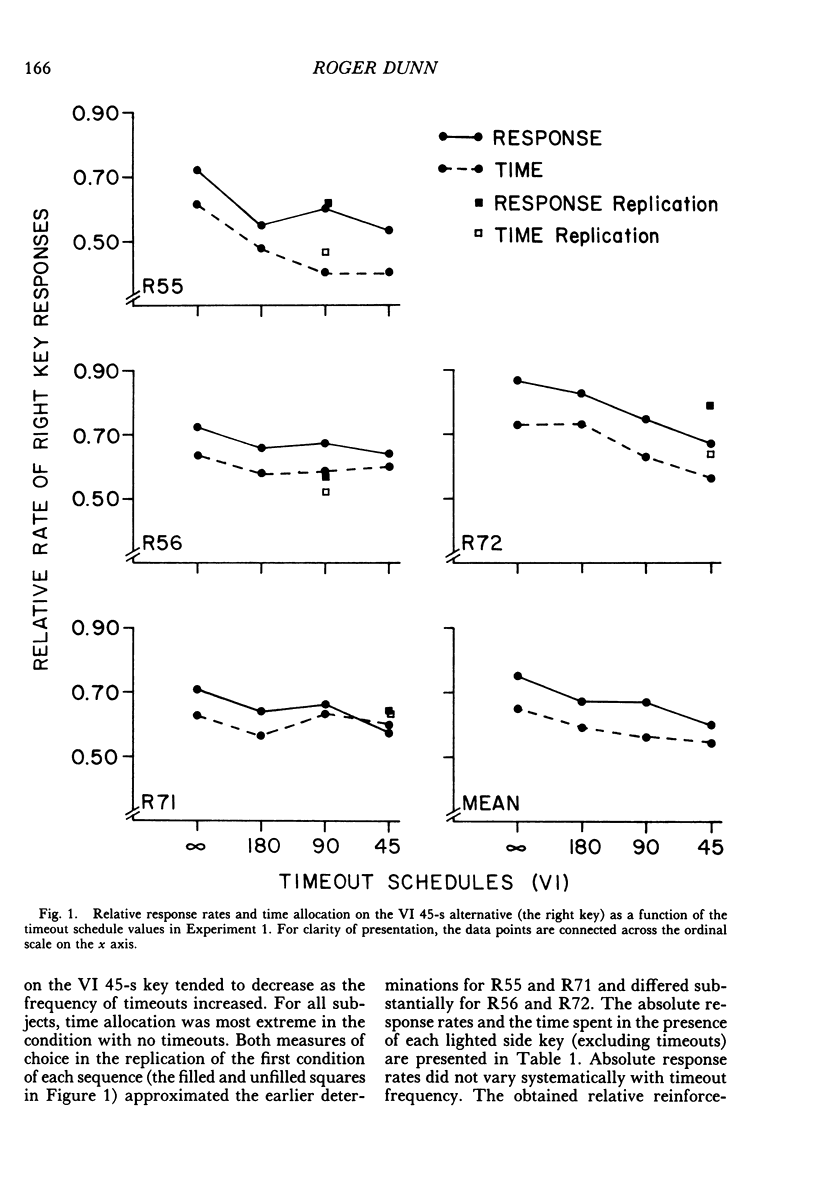


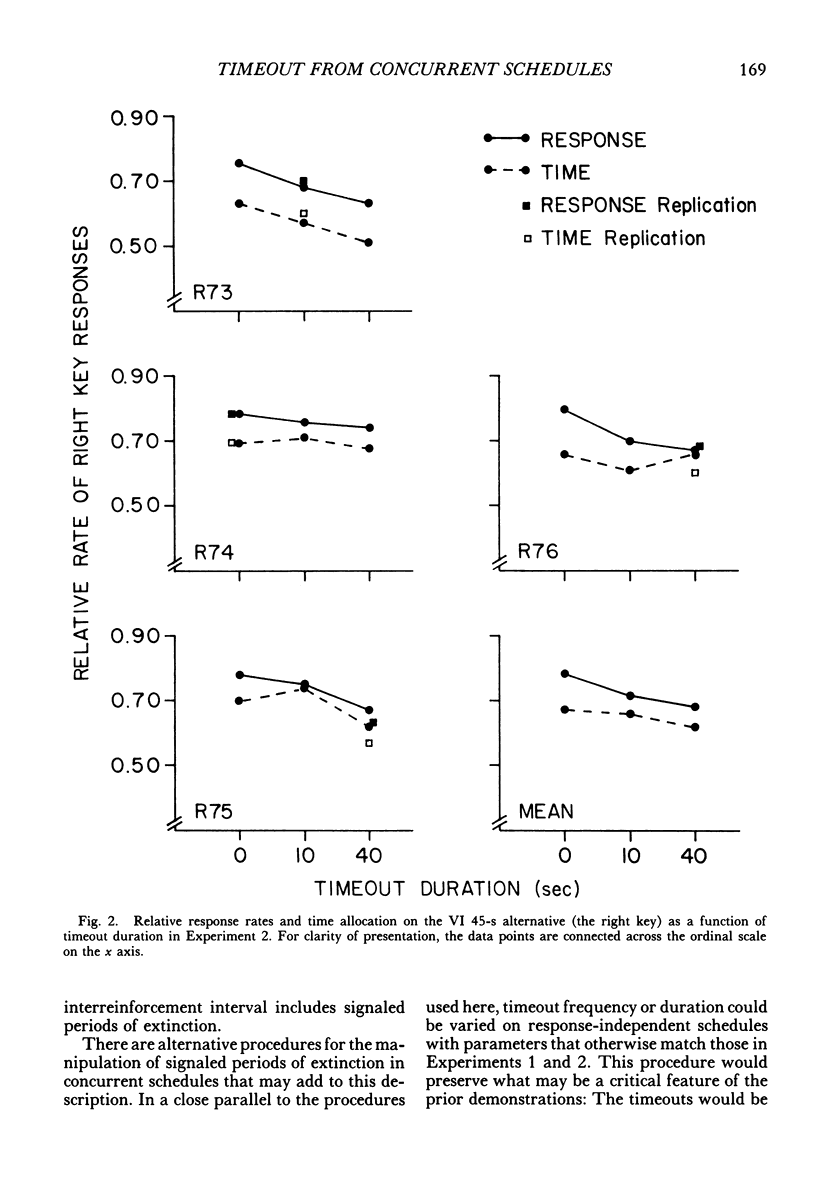
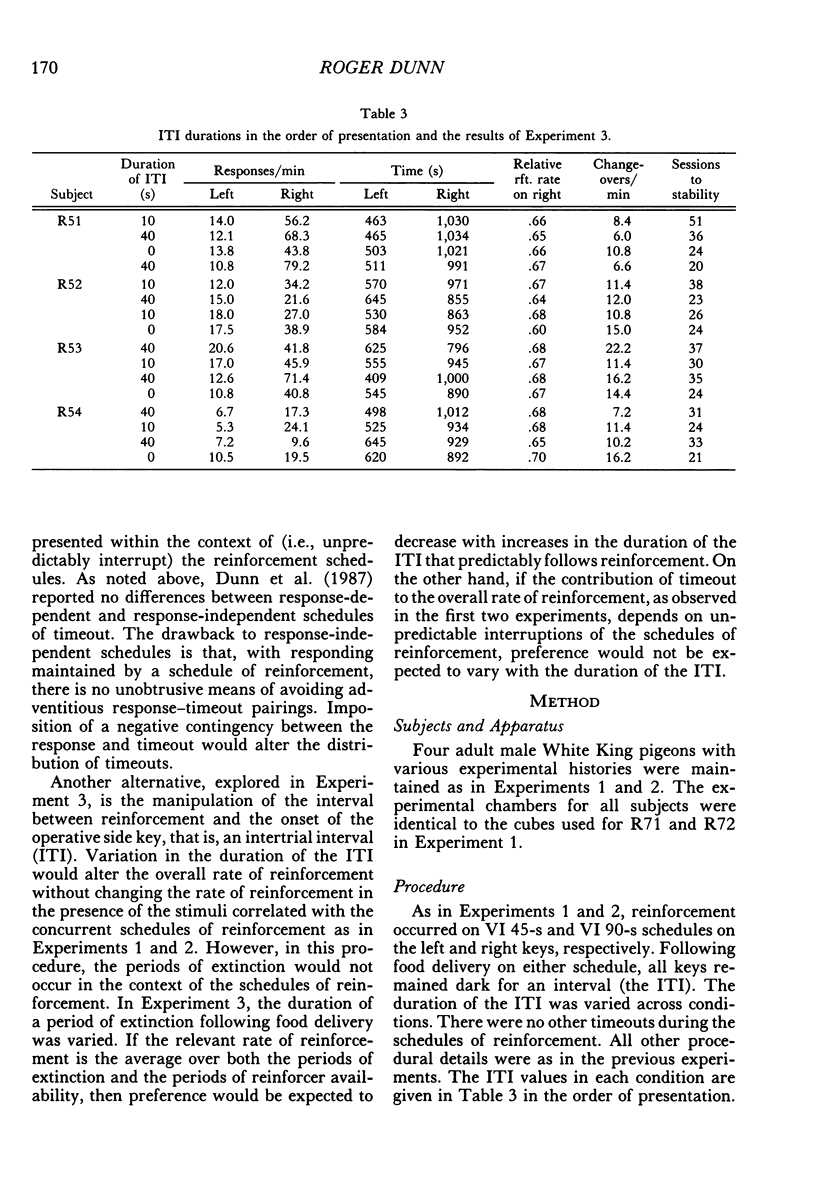
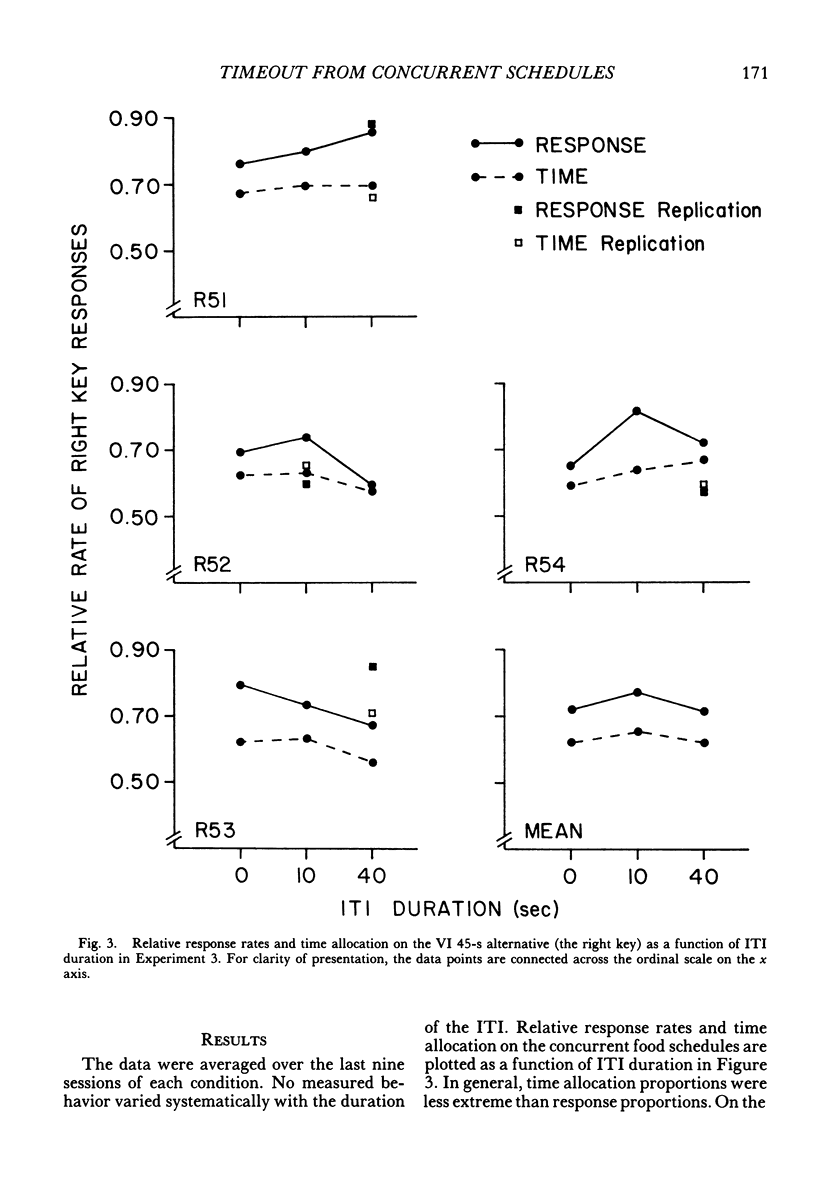
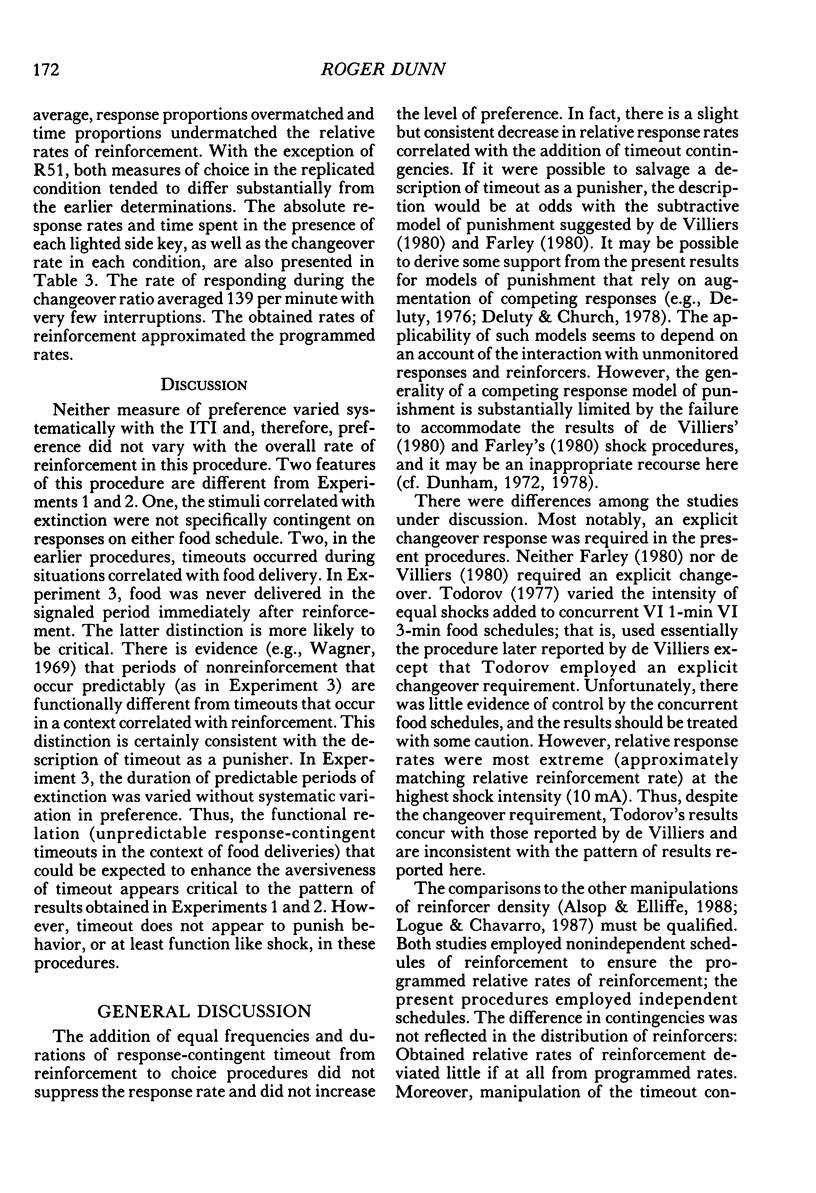
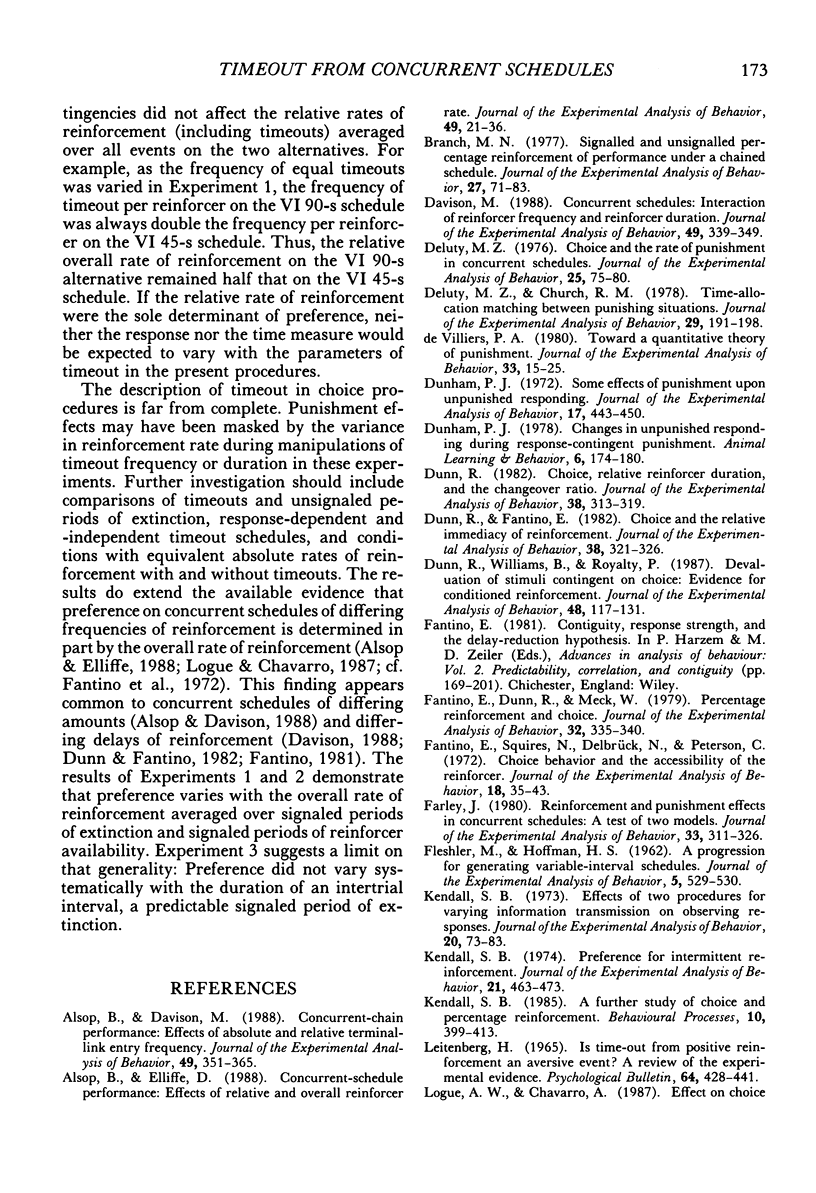
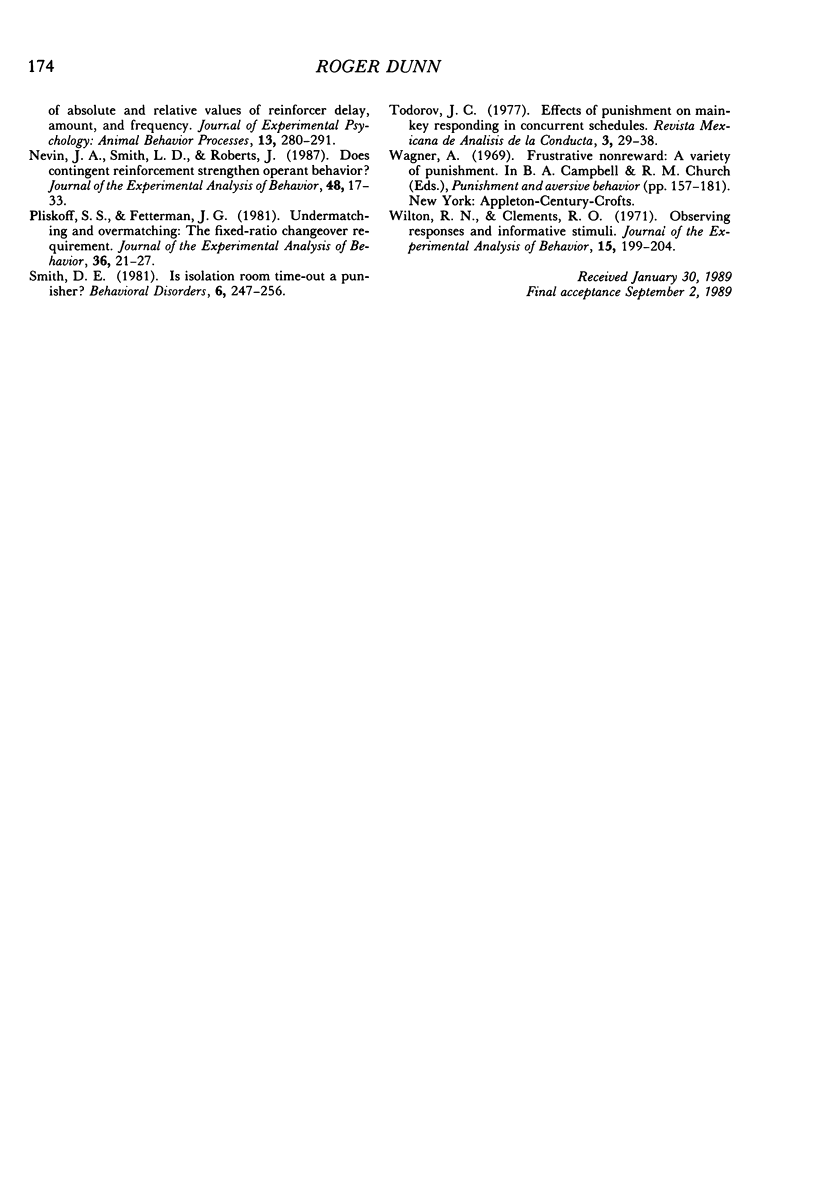
Selected References
These references are in PubMed. This may not be the complete list of references from this article.
- Alsop B., Davison M. Concurrent-chain performance: Effects of absolute and relative terminal-link entry frequency. J Exp Anal Behav. 1988 May;49(3):351–365. doi: 10.1901/jeab.1988.49-351. [DOI] [PMC free article] [PubMed] [Google Scholar]
- Alsop B., Elliffe D. Concurrent-schedule performance: Effects of relative and overall reinforcer rate. J Exp Anal Behav. 1988 Jan;49(1):21–36. doi: 10.1901/jeab.1988.49-21. [DOI] [PMC free article] [PubMed] [Google Scholar]
- Branch M. N. Signalled and unsignalled percentage reinforcement of performance under a chained schedule. J Exp Anal Behav. 1977 Jan;27(1):71–83. doi: 10.1901/jeab.1977.27-71. [DOI] [PMC free article] [PubMed] [Google Scholar]
- Davison M. Concurrent schedules: Interaction of reinforcer frequency and reinforcer duration. J Exp Anal Behav. 1988 May;49(3):339–349. doi: 10.1901/jeab.1988.49-339. [DOI] [PMC free article] [PubMed] [Google Scholar]
- Deluty M. Z. Choice and the rate of punishment in concurrent schedules. J Exp Anal Behav. 1976 Jan;25(1):75–80. doi: 10.1901/jeab.1976.25-75. [DOI] [PMC free article] [PubMed] [Google Scholar]
- Deluty M. Z., Church R. M. Time-allocation matching between punishing situations. J Exp Anal Behav. 1978 Mar;29(2):191–198. doi: 10.1901/jeab.1978.29-191. [DOI] [PMC free article] [PubMed] [Google Scholar]
- Dunham P. J. Some effects of punishment upon unpunished responding. J Exp Anal Behav. 1972 May;17(3):443–450. doi: 10.1901/jeab.1972.17-443. [DOI] [PMC free article] [PubMed] [Google Scholar]
- Dunn R. M. Choice, relative reinforcer duration, and the changeover ratio. J Exp Anal Behav. 1982 Nov;38(3):313–319. doi: 10.1901/jeab.1982.38-313. [DOI] [PMC free article] [PubMed] [Google Scholar]
- Dunn R., Fantino E. Choice and the relative immediacy of reinforcement. J Exp Anal Behav. 1982 Nov;38(3):321–326. doi: 10.1901/jeab.1982.38-321. [DOI] [PMC free article] [PubMed] [Google Scholar]
- Dunn R., Williams B., Royalty P. Devaluation of stimuli contingent on choice: evidence for conditioned reinforcement. J Exp Anal Behav. 1987 Jul;48(1):117–131. doi: 10.1901/jeab.1987.48-117. [DOI] [PMC free article] [PubMed] [Google Scholar]
- FLESHLER M., HOFFMAN H. S. A progression for generating variable-interval schedules. J Exp Anal Behav. 1962 Oct;5:529–530. doi: 10.1901/jeab.1962.5-529. [DOI] [PMC free article] [PubMed] [Google Scholar]
- Fantino E., Dunn R., Meck W. Percentage reinforcement and choice. J Exp Anal Behav. 1979 Nov;32(3):335–340. doi: 10.1901/jeab.1979.32-335. [DOI] [PMC free article] [PubMed] [Google Scholar]
- Fantino E., Squires N., Delbrück N., Peterson C. Choice behavior and the accessibility of the reinforcer. J Exp Anal Behav. 1972 Jul;18(1):35–43. doi: 10.1901/jeab.1972.18-35. [DOI] [PMC free article] [PubMed] [Google Scholar]
- Farley J. Reinforcement and punishment effects in concurrent schedules: A test of two models. J Exp Anal Behav. 1980 May;33(3):311–326. doi: 10.1901/jeab.1980.33-311. [DOI] [PMC free article] [PubMed] [Google Scholar]
- Kendall S. B. Effects of two procedures for varying information transmission on observing responses. J Exp Anal Behav. 1973 Jul;20(1):73–83. doi: 10.1901/jeab.1973.20-73. [DOI] [PMC free article] [PubMed] [Google Scholar]
- Kendall S. B. Preference for intermittent reinforcement. J Exp Anal Behav. 1974 May;21(3):463–473. doi: 10.1901/jeab.1974.21-463. [DOI] [PMC free article] [PubMed] [Google Scholar]
- Leitenberg H. Is time-out from positive reinforcement an aversive event? A review of the experimental evidence. Psychol Bull. 1965 Dec;64(6):428–441. doi: 10.1037/h0022657. [DOI] [PubMed] [Google Scholar]
- Nevin J. A., Smith L. D., Roberts J. Does contingent reinforcement strengthen operant behavior? J Exp Anal Behav. 1987 Jul;48(1):17–33. doi: 10.1901/jeab.1987.48-17. [DOI] [PMC free article] [PubMed] [Google Scholar]
- Pliskoff S. S., Fetterman J. G. Undermatching and overmatching: The fixed-ratio changeover requirement. J Exp Anal Behav. 1981 Jul;36(1):21–27. doi: 10.1901/jeab.1981.36-21. [DOI] [PMC free article] [PubMed] [Google Scholar]
- Wilton R. N., Clements R. O. Observing responses and informative stimuli. J Exp Anal Behav. 1971 Mar;15(2):199–204. doi: 10.1901/jeab.1971.15-199. [DOI] [PMC free article] [PubMed] [Google Scholar]
- de Villiers P. A. Toward a quantitative theory of punishment. J Exp Anal Behav. 1980 Jan;33(1):15–25. doi: 10.1901/jeab.1980.33-15. [DOI] [PMC free article] [PubMed] [Google Scholar]


